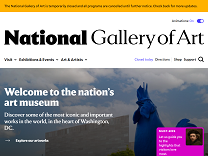Osage Indians by George Catlin https://www.nga.gov/artworks/50377-osage-indians
During the mid-19th century, George Catlin created two large collections of paintings featuring portraits of Native Americans, genre scenes, and western landscapes. The first collection, which he called his „Indian Gallery,“ included more than 500 works completed during the 1830s.
To our right, the man closest to the woman sits with his legs crossed, and the other

